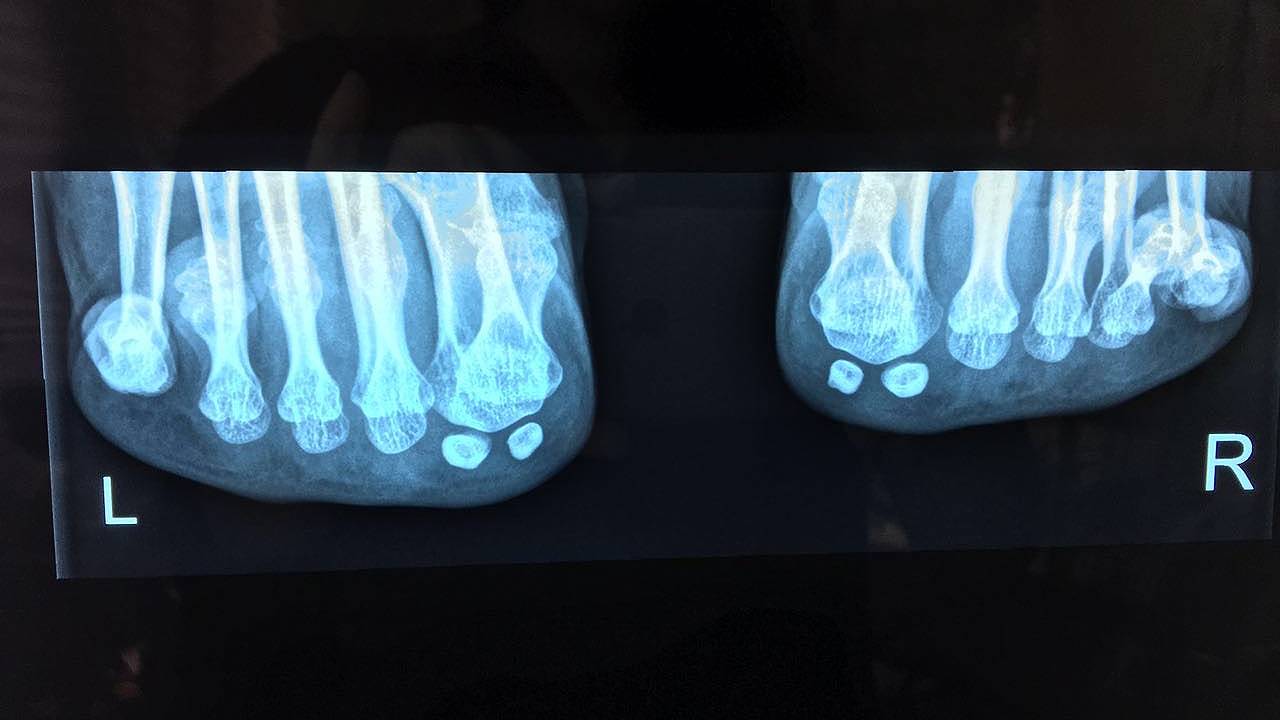What are sesamoid bones?
Sesamoid bones are embedded in the tendons found across the body. The most well-known sesamoid bones of the foot are two pea-sized bone structures found on the front part of the foot below the big toe.
The sesamoids act like pulleys, providing a smooth surface and canal for the tendons in the big toe to slide and transmit muscular forces. It assists with weight bearing and helps elevate the bones of the big toe. On top of that, the sesamoids serve as a fulcrum during walking, especially during the toe-off phase of the gait cycle.
How can my sesamoids be injured?
Sesamoiditis is one of the most common sesamoid-related problems; it occurs when the sesamoids become inflamed, affecting the surrounding tissues. This inflammation may cause intense pain below the first metatarsal joint in the ball of the foot.
Recurrent stress on the sesamoids often results in injury to the bone, tendon and surrounding joint tissues. One such injury that can be sustained is turf toe, which is a sprain to the big toe joint due to excessive upward bending. Impact that is repetitive or forceful enough may also result in a fracture, osteoarthritis or osteonecrosis of the sesamoid.
What happens if you break a sesamoid bone?
Typically, x-rays are used to detect and confirm the diagnosis in cases of bone fracture. However, due to their small size and multiple differential diagnoses, diagnostic ultrasound imaging may be supplemented for a more accurate diagnosis and to further determine the severity of the condition.


Common Symptoms
- Pain underneath the big toe in the ball of the feet
- Aching and pain when walking or standing
- Pain worsens during toe-off or when the toe is bent when walking
- Difficulty in bending the big toe
- Pain may develop gradually for overuse injuries, but acute pain will be immediate when the fracture occurs
There are a few home remedies that can help relieve pain associated with sesamoiditis. These include, resting, ice compression and cushioning the sole of the big toe. Over-the-counter pain medications may also be taken for temporary pain relief. However, if symptoms do not subside after 3 days, you should consult a foot specialist or podiatrist.
Types of Approaches
If left unaddressed, the condition may deteriorate to a point where surgery will be the only option. To avoid this outcome, consult a foot specialist or a podiatrist, for non-invasive conservative management to relieve pain and prevent the condition from worsening. The solution tailored to your specific injury may involve reducing soft tissue swelling and nerve pain or increasing range of motion around a scarred joint.
At East Coast Podiatry, our podiatrists will perform a thorough biomechanical and musculoskeletal assessment of the lower limb to generate a diagnosis. Once the diagnosis is confirmed, your podiatrist will implement a strategy that minimises complications, such as foot disability, helping to maintain a good quality of life and improving functional mobility.
We offer a variety of solutions for sesamoiditis, including extracorporeal shockwave therapy (ESWT), pulsed electromagnetic field therapy (PEMF), customized foot orthotics, and surgical removal of the sesamoid bones.




